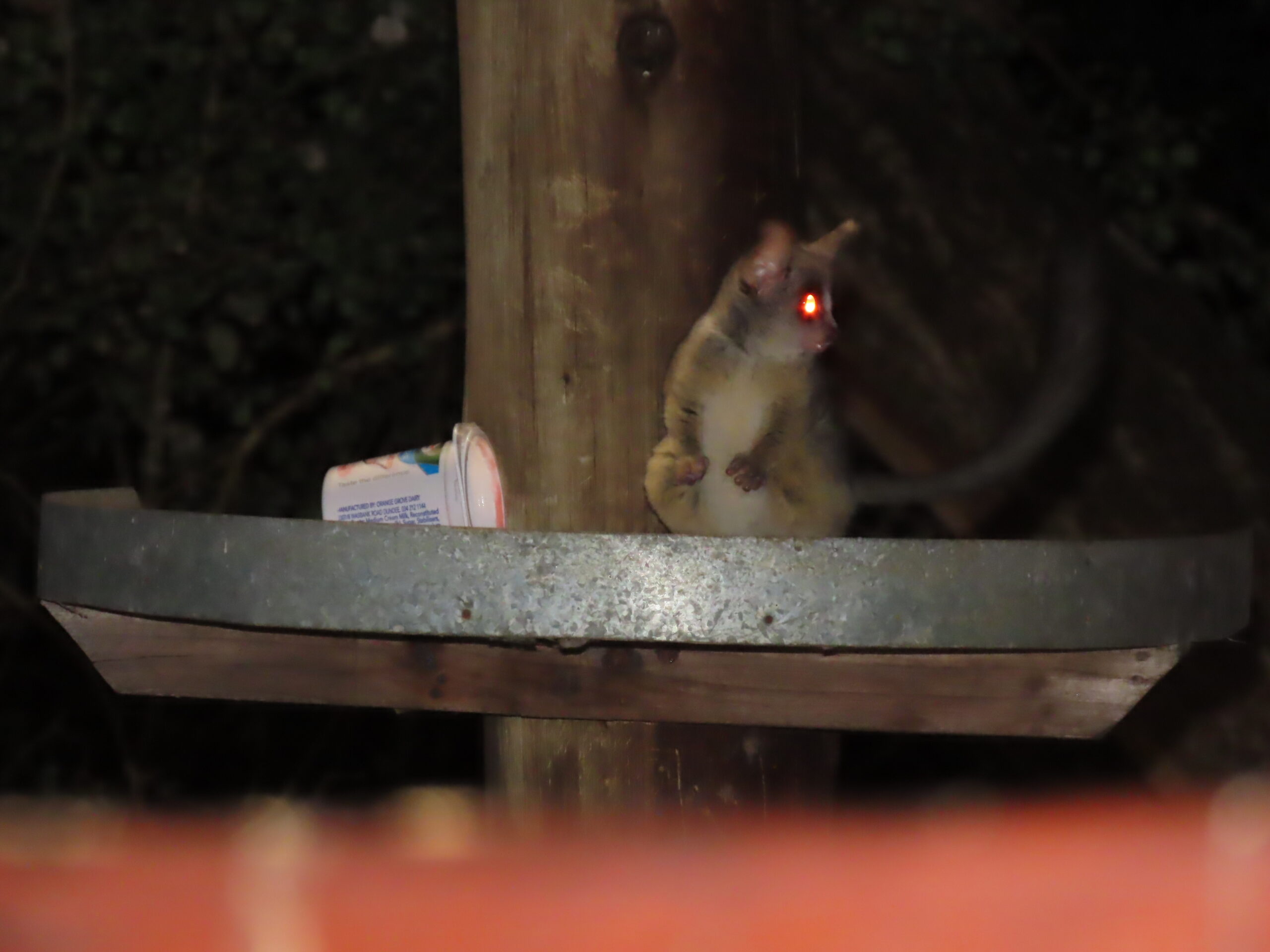
Yesterday afternoon, our friends Lorraine and Michael (who is the cousin of our friends Don and Kathy) arrived for sundowners and dinner. It was cold outside, but we all bundled up and stayed warm after dinner when the temperature dropped dramatically and the winds picked up.
The conversation was lively and engaging throughout the evening, as we discovered we had many common interests in our shared love of wildlife and the bush. This is a common theme we’ve enjoyed as we’ve made many friends in the bush over the years we’ve spent in Marloth Park since we first arrived in 2013.
For the first time, both the thick-tailed bushbaby and the much smaller lesser bushbaby arrived to eat the yogurt. In the recent past, we wrote about the thick-tailed bushbaby when we spotted one here at night, and again, a Jabula on a weekend night.
Here’s our story about the smaller “lesser bushbaby”:
The Elusive Acrobat of the Night: Lifestyle and Habits of the Lesser Bushbaby in South Africa
Hidden in the moonlit forests and woodlands of South Africa, a small, wide-eyed creature lives a life of agility, caution, and clever adaptation. The lesser bushbaby, also known as the lesser galago (Galago moholi), is a nocturnal primate whose endearing appearance belies a complex and intriguing lifestyle. Known for their enormous eyes, velvety fur, and spring-loaded limbs, these tiny tree-dwellers are among the continent’s most fascinating — yet often unseen — nocturnal mammals.
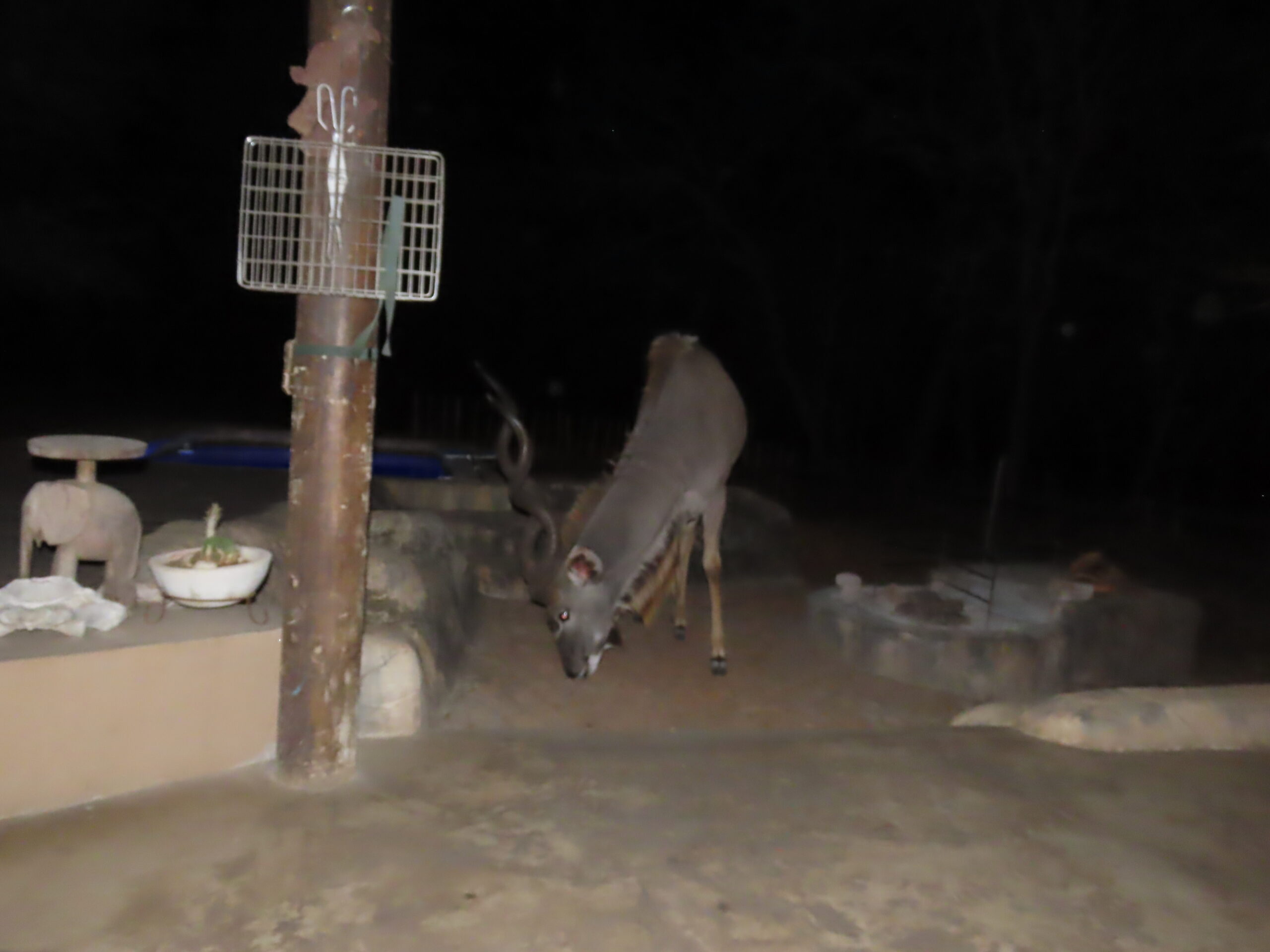
Masters of the Night
Lesser bushbabies are strictly nocturnal, meaning they are active only after the sun sets. During the day, they take refuge in tree hollows, thick foliage, or nests made from leaves and twigs, hiding from predators and the hot African sun. As dusk falls, they awaken with energy, grooming themselves and each other before heading out in search of food.
Their massive eyes are not just cute — they are a functional adaptation for life in the dark. These eyes are highly reflective, giving them exceptional night vision. If you’re lucky enough to spot one with a flashlight, the reflection from their eyes shines like twin orbs in the darkness.
Agile Athletes of the Trees
One of the most remarkable traits of the lesser bushbaby is its leaping ability. They are capable of springing more than two meters in a single bound — an astonishing feat for an animal that rarely exceeds 15 centimeters in height. Using their powerful hind legs and long tails for balance, they can leap from branch to branch with incredible speed and accuracy.
Their hands and feet are perfectly adapted for life in the trees. Each digit has a flat pad that helps grip branches, and their second toe sports a specialized grooming claw — a tool they use meticulously to keep their fur in pristine condition.
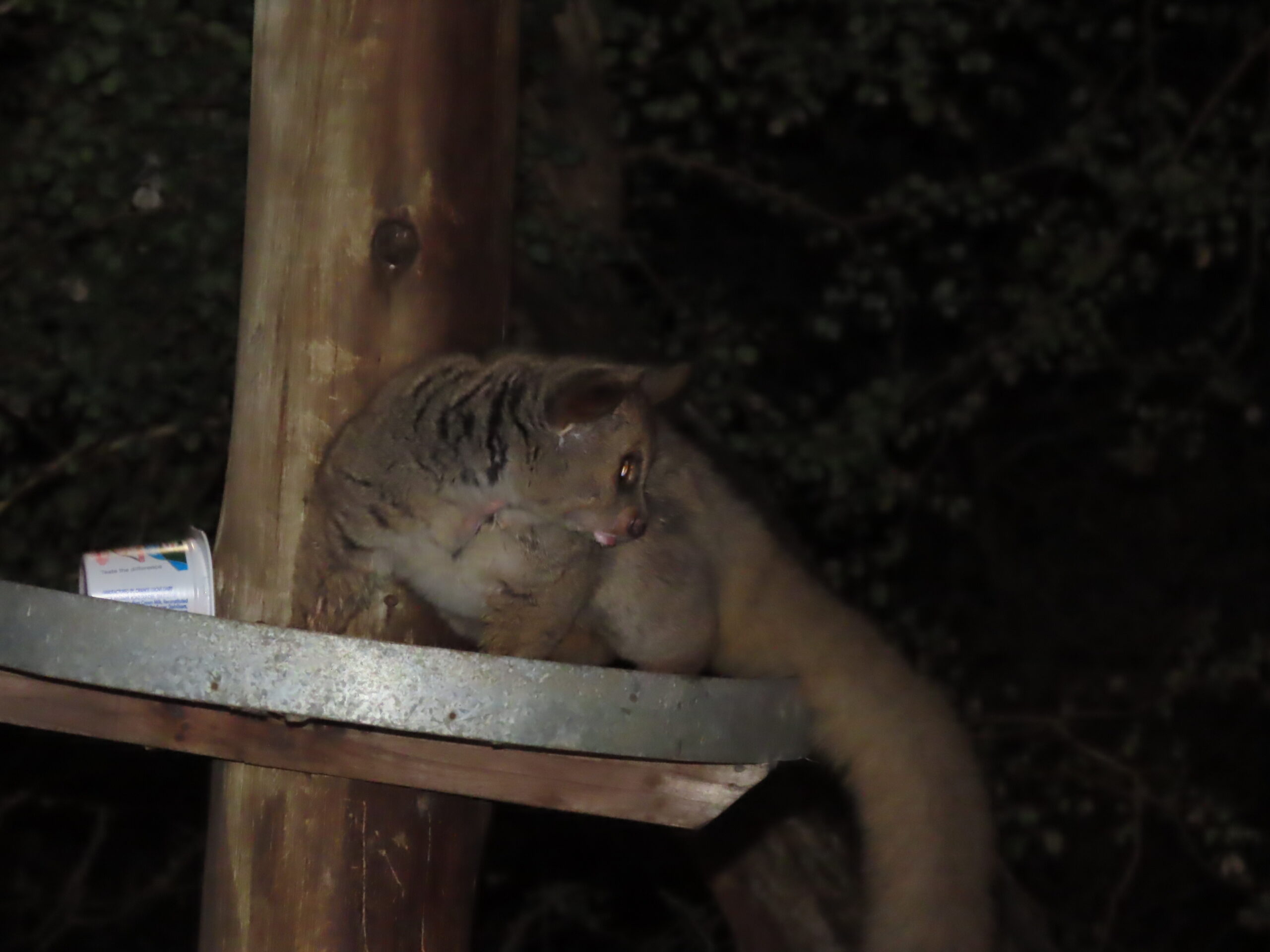
Diet: Sweet and Savory
Lesser bushbabies are omnivores, with a diet that shifts depending on the season and food availability. Their preferred food is tree gum, which they lick from bark using a long, slender tongue. Acacia trees are especially popular sources of this sticky, nutrient-rich substance. To access gum, bushbabies will often bite into tree bark and return later to harvest the sap that seeps out.
But tree gum isn’t their only menu item. Insects — particularly moths, beetles, and grasshoppers — make up a substantial part of their diet. They also consume small vertebrates, fruit, and occasionally flower nectar. Their sharp hearing allows them to detect even the faintest rustle of prey, making them efficient nocturnal hunters.
Communication and Territory
Though generally solitary foragers, lesser bushbabies maintain a loose social structure and communicate using a variety of sounds, scents, and behaviors. Their vocalizations include clicks, chirps, and distinctive “crying baby” calls — the origin of the name “bushbaby.” These calls can carry over long distances at night, helping individuals locate each other or warn of danger.
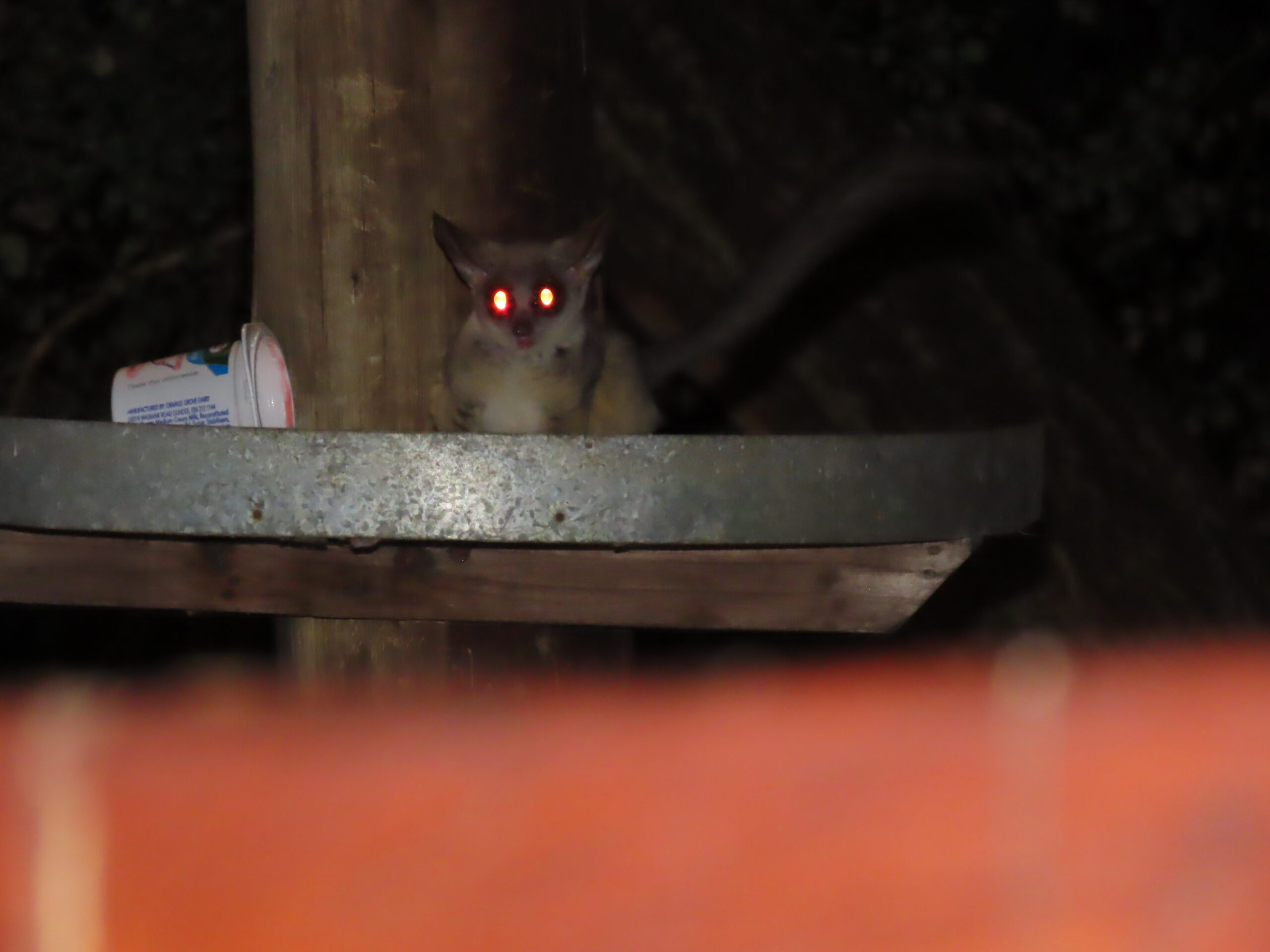
Territorial by nature, males will defend their range from intruding males, using scent-marking and vocal displays to assert dominance. Females, on the other hand, tend to have overlapping ranges and often form close-knit groups with their young or other related females.
Breeding and Raising Young
The breeding season for the lesser bushbaby typically coincides with the warmer months, when food is more abundant. After a gestation period of around 125 days, the female gives birth to one or two infants. Newborns are altricial — born blind and helpless — and are kept in the safety of a nest or dense foliage for the first few weeks.
Mothers carry their infants in their mouths from one sleeping site to another and leave them in hiding spots while they forage at night. As the babies grow stronger, they begin clinging to their mother’s fur and eventually start exploring the branches on their own. Weaning occurs around six weeks of age, but the young may remain close to their mothers for several months.
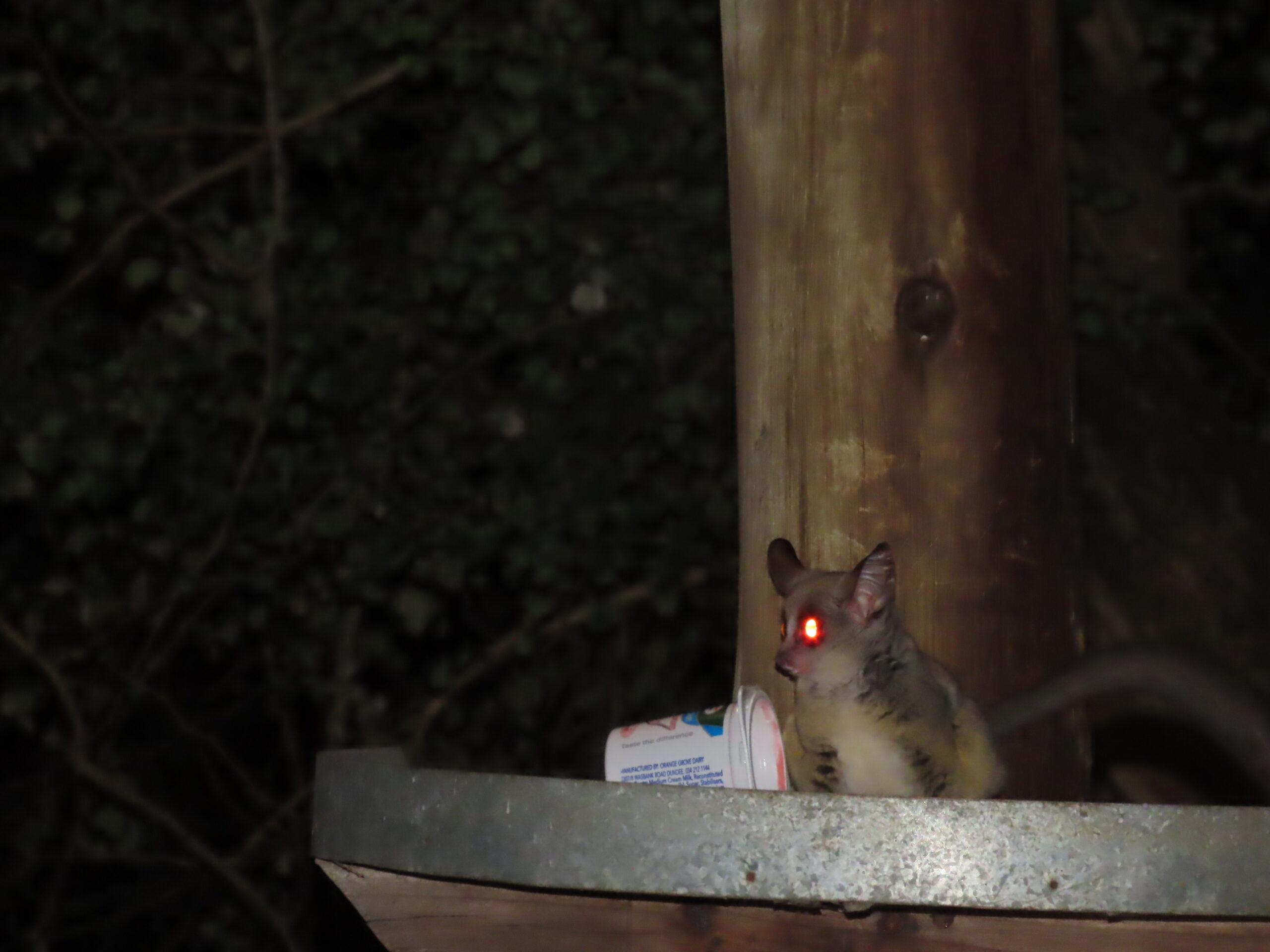
Habitat and Threats
Lesser bushbabies are found across much of southern Africa, including savannas, woodland edges, riverine forests, and suburban gardens — especially where trees and shrubs offer shelter and food sources. In South Africa, they are commonly seen in areas like the Kruger National Park and Marloth Park, though their secretive nature often keeps them hidden from casual observers.
Despite being classified as “Least Concern” by the IUCN, these small primates face several threats. Habitat destruction due to urbanization and agriculture poses a growing risk, as does predation by domestic cats and owls. In some areas, bushbabies are also captured for the pet trade, which disrupts wild populations and often leads to poor welfare outcomes for the animals involved.
Endearing Survivors
Their wide-eyed innocence and nimble movements make the lesser bushbaby a beloved figure among wildlife enthusiasts. Yet these tiny primates are much more than just adorable faces — they are intelligent, resourceful, and deeply adapted to life in a complex, ever-changing environment.

In the quiet of a South African night, while the world sleeps and the stars stretch out above, the lesser bushbaby leaps effortlessly from branch to branch — a silent and enduring symbol of nature’s remarkable creativity.
Tonight, we’re staying in, having a lovely evening and again, a delightful evening in the bush.
Be well.
Photo from ten years ago today, August 4, 2025:

